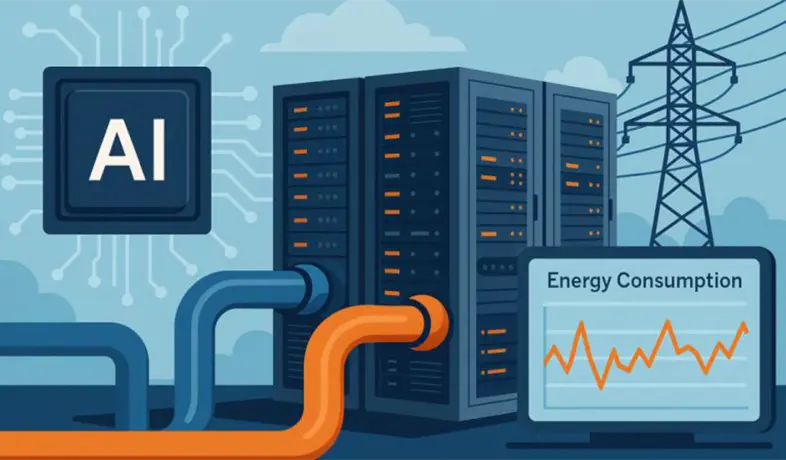
In recent years, sustainability has moved from a peripheral consideration to a central pillar of project goals and success. Organizations across industries are increasingly aware that sustainability is not just about compliance or corporate image; it’s about long-term efficiency, resilience, and responsible resource management.
Integrating sustainability metrics into project cost planning enables project professionals and cost engineers to evaluate not only the financial implications of their decisions but also their environmental and social impacts. This holistic approach leads to more informed and future-oriented project outcomes that align with both business objectives and global sustainability goals.
Understanding the Importance of Sustainability Metrics
For cost engineers and project professionals, sustainability metrics are no longer optional; they are becoming essential inputs and a standard in decision-making. Traditional cost planning has typically focused on direct financial costs, but this perspective can overlook hidden externalities such as carbon emissions, energy use, and material waste. Integrating sustainability metrics provides a broader understanding of project performance, ensuring that investment decisions reflect true lifecycle value rather than just short-term cost efficiency.
By aligning sustainability considerations with cost planning, organizations can better anticipate risks, enhance their reputation, and meet increasingly stringent environmental regulations. This integrated approach also helps stakeholders demonstrate measurable progress toward sustainability targets, a growing expectation in today’s competitive project landscape.
Defining Sustainability Metrics
Sustainability metrics are quantifiable indicators used to measure the environmental, social, and economic dimensions of a project. In cost engineering, these metrics help assess how project decisions affect factors like carbon emissions, resource efficiency, and lifecycle performance.
For example, tools such as Contruent and Sterling Estimating solutions now focus increasingly on carbon dioxide estimating capabilities, allowing cost professionals to measure and forecast a project’s carbon footprint alongside traditional financial data. This enables project teams to not only focus on the initial investment, but also analyze and compare lifecycle cost with lifecycle emissions. Performing this analysis provides valuable insights into how design or procurement decisions impact both expenditure and environmental performance.
Sustainability metrics might include:
- Carbon footprint (CO2e): emissions generated across a project’s lifecycle
- Energy consumption: total energy required to execute and operate the project
- Material efficiency: use of recycled or low-impact materials
- Water usage and waste reduction: measures of resource conservation
When embedded into the cost planning process, these metrics help organizations balance financial objectives with sustainability goals.
Benefits of Incorporating Sustainability Metrics
Integrating sustainability metrics into cost planning delivers a range of tangible and strategic benefits.
- Enhanced cost predictability: By factoring in sustainability variables such as energy efficiency or material lifecycle performance, project teams can anticipate long-term operational costs (OPEX) more accurately. This improves overall project predictability and reduces financial surprises down the line.
- Reduced environmental impact: Measuring and managing sustainability metrics allows teams to identify design alternatives that minimize emissions and reduce waste.
For example, quantifying lifecycle emissions can lead to smarter choices in materials and construction methods, supporting both environmental and corporate objectives. - Competitive advantage and compliance: As regulations tighten and client expectations evolve, organizations that integrate sustainability into their cost frameworks are better positioned to win projects and meet future reporting requirements.
Ultimately, sustainable cost planning promotes value creation that extends beyond project delivery, supporting continuous improvement and organizational resilience.
Methods for Integrating Sustainability Metrics

There are several practical approaches to embedding sustainability into cost planning processes.
Integrating sustainability metrics into software
Cost estimating software such as Cleopatra Enterprise can incorporate sustainability metrics directly into cost models. Combined with specialized carbon estimating tools like Contruent and Sterling, project teams can assess cost and carbon simultaneously, ensuring every financial decision reflects sustainability performance.
In addition, project controls software can use these integrated data sets to track sustainability KPIs and provide real-time insights into cost and environmental performance.
Applying Life Cycle Assessment (LCA)
Conducting LCAs helps quantify the environmental impact of materials, energy use, and operations across the project’s lifespan. When integrated with lifecycle costing, this dual analysis of cost versus emissions provides a more complete understanding of project value.
Standardizing data and benchmarking sustainability performance
Establishing consistent methods for measuring sustainability performance allows organizations to compare projects over time, identify trends, and drive improvement in both cost efficiency and sustainability outcomes.
Fostering cross-functional collaboration in project planning
Involving cost engineers, sustainability specialists, and project managers early in the planning phase ensures that sustainability goals are considered alongside budget and schedule objectives.
Challenges and Solutions
While the benefits are clear, integrating sustainability metrics into project cost planning is not without challenges.
1. Data availability and quality
Reliable sustainability data can be difficult to obtain, particularly in complex supply chains.
Solution: Invest in digital tools and standardized data collection methods to ensure consistency and accuracy across projects.
2. Skill gaps in sustainability analysis
Many cost professionals are still developing expertise in interpreting sustainability data.
Solution: Provide targeted training to enhance understanding of carbon accounting, LCA, and sustainable procurement practices.
3. Balancing short-term cost and long-term value
Sustainable options can sometimes appear more expensive upfront.
Solution: Use lifecycle costing to demonstrate the long-term savings and risk reductions that sustainable choices deliver.
By addressing these challenges proactively, organizations can create a cost planning framework that integrates sustainability as a core performance measure, not an afterthought.
The integration of sustainability metrics into project cost planning represents a pivotal shift in the cost engineering discipline. It’s not merely about measuring costs for investments (CAPEX) but about understanding the true impact of every project decision. By leveraging advanced tools, lifecycle assessments, and data-driven insights, cost professionals can lead the way toward more sustainable, efficient, and responsible project delivery.
How can organizations turn these insights into actionable improvements? Consider adopting capital project management software to enhance collaboration, align performance metrics, and improve overall project outcomes.
Effective project cost tracking is essential to staying on budget and making informed decisions. This guide explains how…
Cost control Key Performance Indicators (KPIs) are important metrics that help project managers monitor, evaluate, and improve the…
Related resources

How to visualize your real-time costs with software
During project execution you want real time information about the status of your project. Here are some examples.
Read blog article
The Rise and Implications of Gas Capital Expenditures
The U.S. gas market is experiencing a surge in capital expenditures, creating a wave of megaprojects that will dominate the energy landscape through 2030. Key reasons for this growth include demand from AI and data centers, industrial electrification, and concerns about grid reliability. For project managers, these market conditions mean…
Read blog article